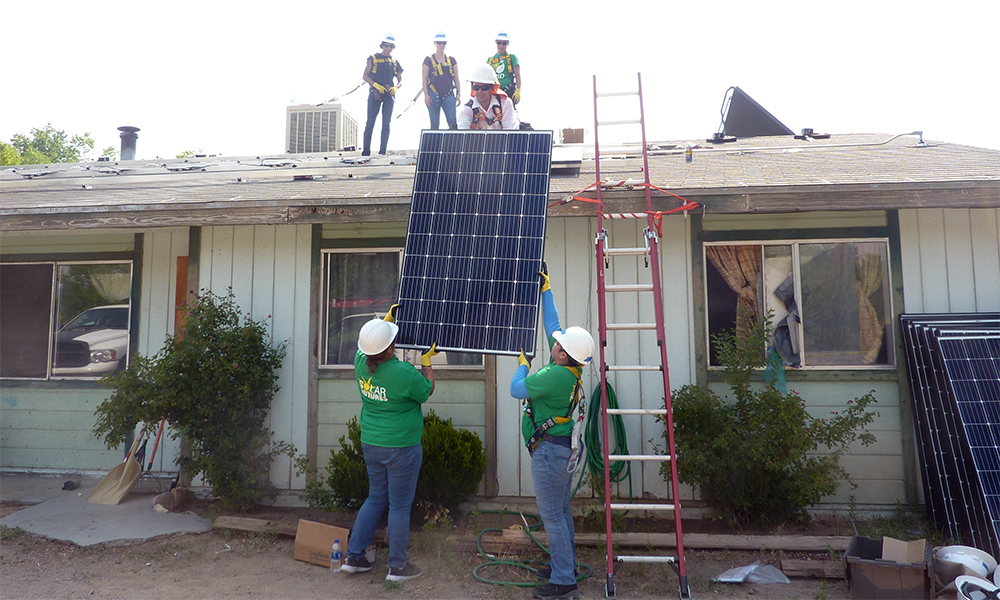
GRID Alternatives
Trainees help install solar panels on the roof of a home as part of a hands-on workshop created by GRID Alternatives and the Bishop Paiute Tribe in Bishop, Calif.
A nonprofit devoted to shifting the nation from fossil fuels is reaching out to young people, providing STEM education and job training in solar installation.
Using a “classroom in the field model,” GRID Alternatives teaches youth — mostly in underserved communities — how to install solar panels.
The Oakland, Calif., based-organization also offers a toolkit for adults so they can make presentations about solar energy to classes and youth groups.
“There’s a big interest in getting youth involved in renewable energy projects,” said Lisa Castilone, community development and tribal manager for GRID Alternatives. Jobs in the solar industry are growing, according to the organization.
In September California mandated that all the state’s electricity must come from clean sources — such as solar, hydropower or wind — by 2045.
One training project for youth took place for the Bishop Paiute Tribe in Bishop, Calif.
“The tribe had a group of students they wanted to get involved,” Castilone said.
Funded by a Department of Energy grant, GRID Alternatives offered 48 hours of instruction to 10 young people from ages 16 to 24 who installed solar panels on several homes. Three students went on to become summer interns for the nonprofit at its branch office in Riverside, Calif. One gained a yearlong fellowship with GRID Alternatives, Castilone said.
Trades training
Much of the organization’s work with youth, however, is in partnership with school districts.
“More districts are trying to bring back training in trades,” and GRID Alternatives Solar Futures project meshes with school efforts, Castilone said. It’s aimed at high school juniors and seniors.
In the classroom, students learn how to design a solar installation, figure out the number of panels needed and where to put them on the roof.
“We take those youth and we bring them out to a home” where they get hands-on experience in installation, Castilone said.
Solar Futures is working in nine schools this year in the Inland Empire area of California, said Cynthia Corrales, workforce and volunteer manager of GRID Alternatives Inland Empire.
In addition, the nonprofit provides its Solar Futures K-8 Toolkit to anyone who wants to speak to a youth group or class about solar energy.
The idea is not only to add to students’ STEM knowledge but also to their understanding of career possibilities in the field. The online toolkit has background information, tips for presenters and activities for students. It also offers lesson plans for professional educators, and includes videos and graphics.
GRID Alternatives, which describes itself as the nation’s largest nonprofit solar installer, is also active in Colorado, Maryland, Delaware, Virginia and the District of Columbia.
It also has projects in Mexico, Nepal and Nicaragua.



























